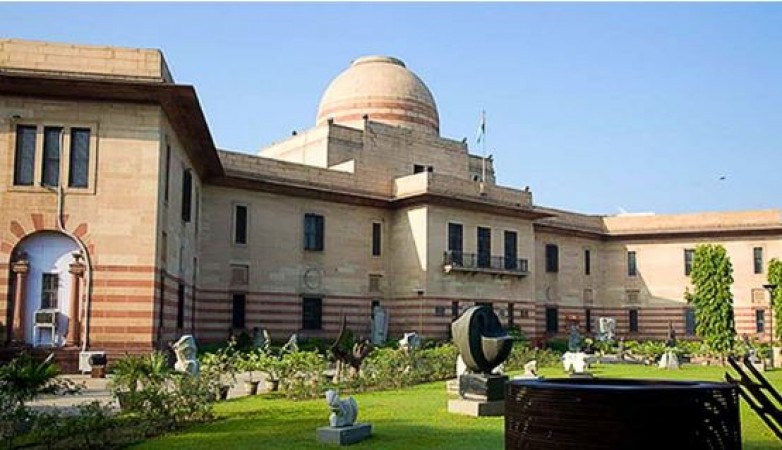
The national Gallery of Modern Art (NGMA) is the India’s prestigious institution dedicated to showcasing and promoting modern and contemporary art. Located in New Delhi, it stands as a testament to India's rich artistic heritage and its ever-evolving artistic expression.
The idea for the NGMA was conceived in the late 1940s, with the goal of establishing a national institution to preserve and exhibit India's modern art. It finally came to fruition in 1954, when the then-Prime Minister of India, Jawaharlal Nehru, inaugurated the NGMA in Jaipur House, an elegant 1936 mansion designed by Sir Arthur Bloomfield. This stately building was originally the residence of the Maharaja of Jaipur and provided an excellent backdrop for displaying contemporary art.
Also Read: Famous Art Heists: Infamous Robberies and Missing Masterpieces
The NGMA's original building, Jaipur House, is a stunning blend of Indian and European architectural styles. With its grand facades, domed structure, and lush gardens, it reflects the amalgamation of tradition and modernity that lies at the heart of Indian art. Over the years, the NGMA expanded its spaces, and today, the gallery boasts a state-of-the-art auditorium, seminar rooms, and a library, in addition to its exhibition halls.
The NGMA boasts an extensive and diverse collection of modern and contemporary Indian art. The collection comprises paintings, sculptures, prints, photographs, and installations, reflecting the evolution of Indian art over the decades. Some of India's most prominent artists, such as Raja Ravi Varma, Amrita Sher-Gil, Rabindranath Tagore, Nandalal Bose, and M.F. Husain, are well represented in the gallery. Visitors can witness the progression of Indian art from its early modernists to the abstract and conceptual artists of recent times.
Also Read: India’s Best Art Galleries
The NGMA consistently organizes thought-provoking exhibitions that explore various themes, styles, and artistic movements. These exhibitions often feature retrospectives of renowned artists, group shows, thematic displays, and collaborations with international galleries. Such events foster dialogue and engagement between artists, curators, critics, and the public, contributing to the enrichment of India's cultural landscape.
The NGMA plays a pivotal role in promoting and preserving India's artistic legacy. It serves as a platform for artists to showcase their work, connect with the public, and gain recognition both nationally and internationally. Furthermore, the NGMA acts as a catalyst for artistic experimentation and innovation by providing artists with a supportive and stimulating environment.
The NGMA is committed to educating and engaging the public through its outreach programs and educational initiatives. It organizes workshops, lectures, seminars, and artist-in-residence programs to foster a deeper understanding of art and creativity. The gallery also collaborates with schools, colleges, and other institutions to promote art education among the youth.
Also Read: The Evolution of Art: Tracing the Journey from Ancient Civilizations to Modern Times
The National Gallery of Modern Art in India stands as a testament to the country's artistic journey. From its inception as a dream to its realization as a thriving institution, the NGMA has played a crucial role in promoting Indian art and culture. With its world-class collections, engaging exhibitions, and educational initiatives, it continues to inspire and enrich the lives of art enthusiasts, fostering an appreciation for India's diverse artistic heritage. As the NGMA evolves and adapts to changing times, it will undoubtedly remain a cornerstone of India's cultural identity and artistic expression for generations to come.
Also Read: India’s Best Art Galleries